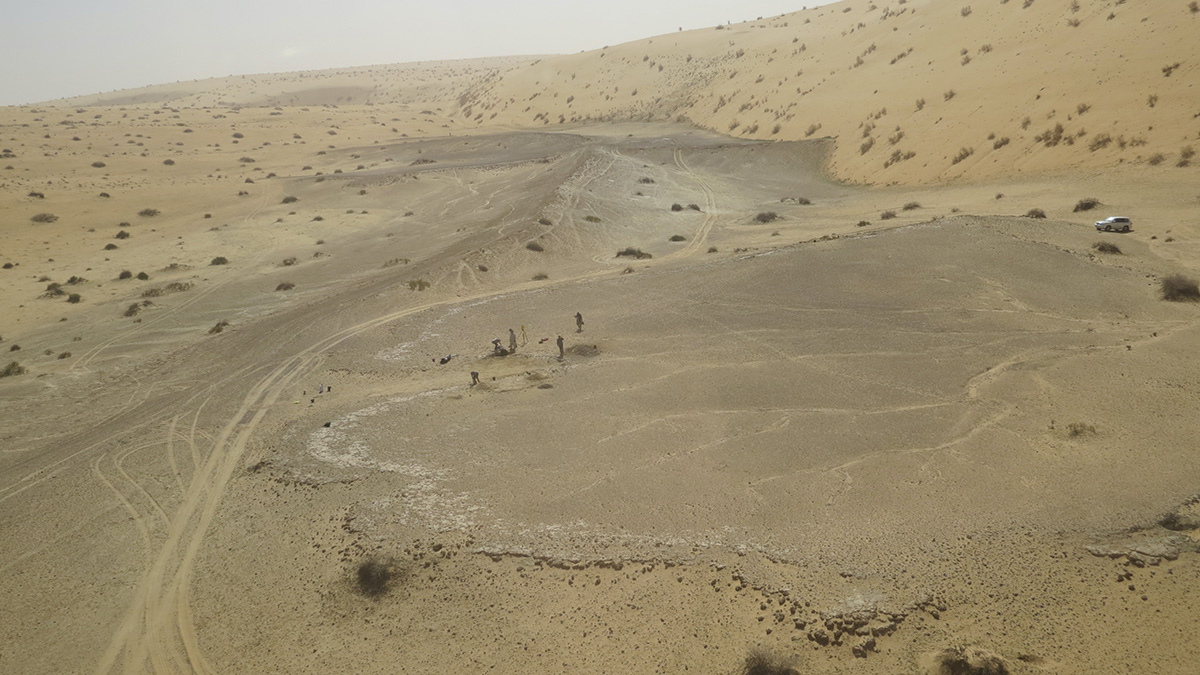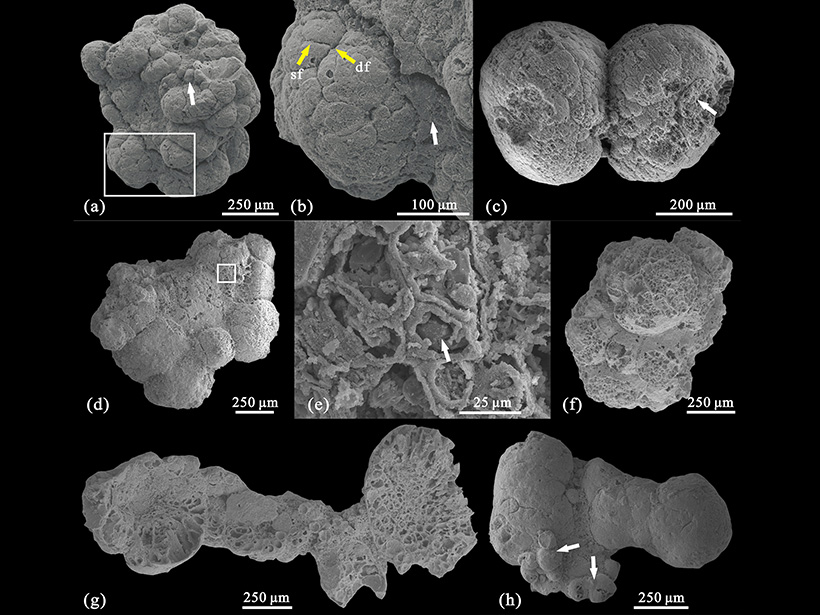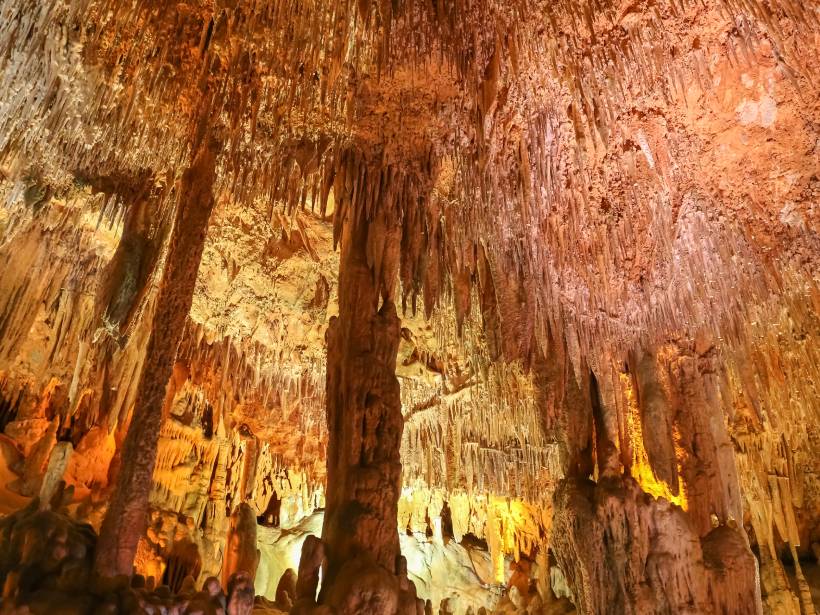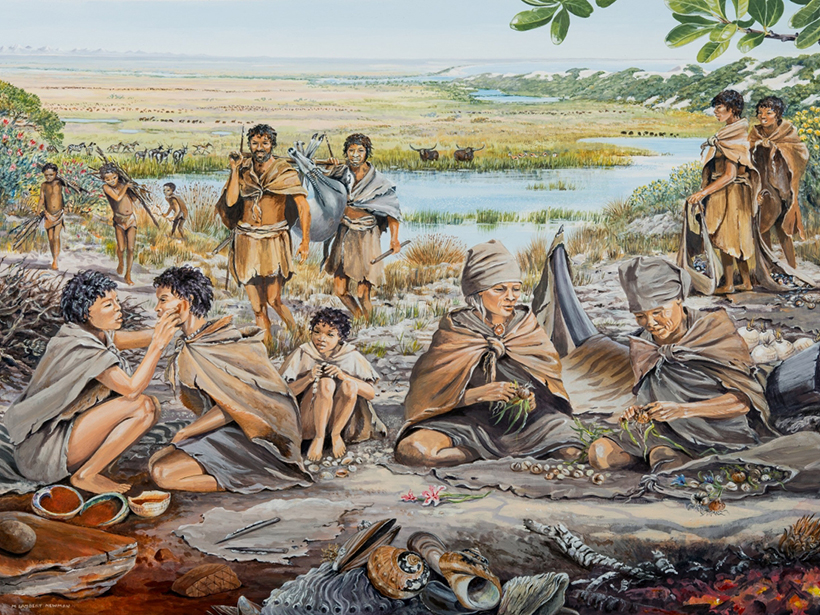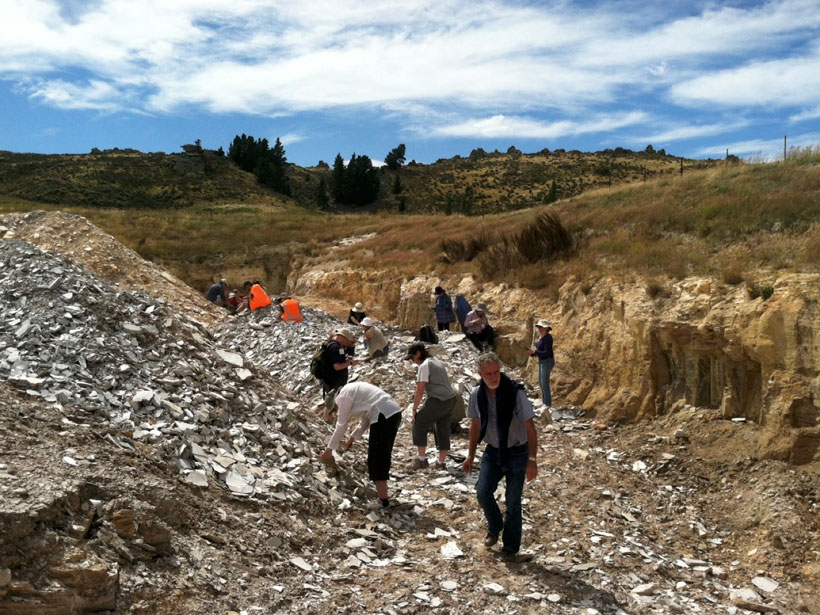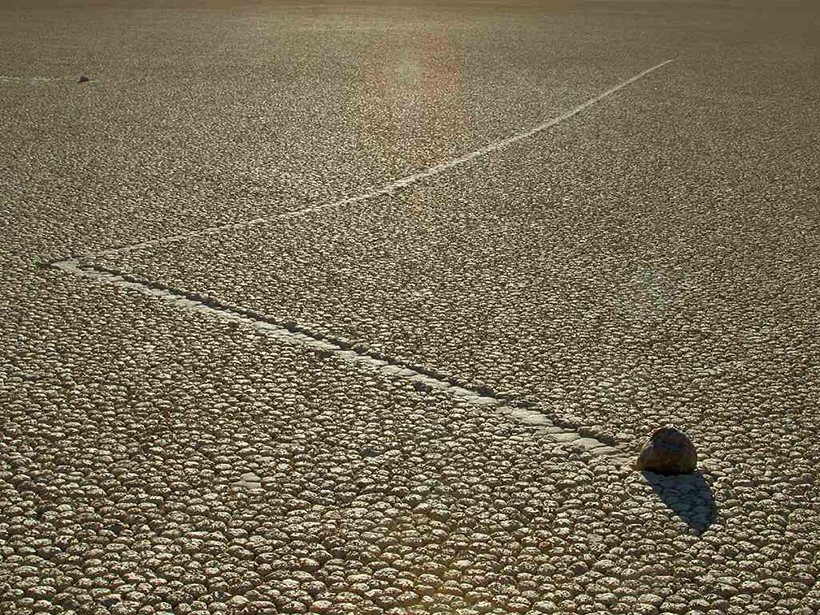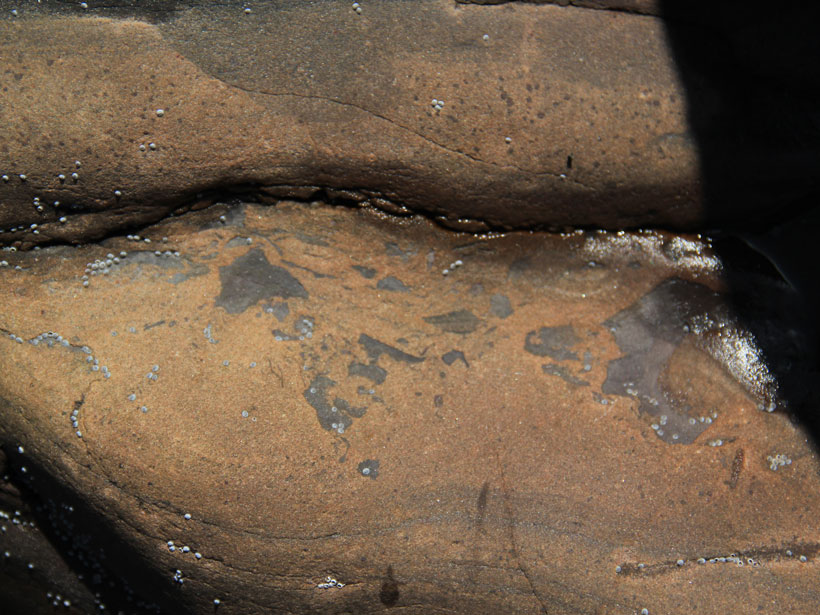Hand axes, hippo bones, and a stack of ancient lake beds show that arid Arabia experienced intervals of humid weather, spurring pulses of human migration over the past 400,000 years.
fossils & paleontology
Multicellular Algae Discovered in an Early Cambrian Formation
A new study describes eukaryotic organisms found organized in a cortex-medulla pattern in southern China’s Kuanchuanpu Formation.
The Rocky Roads of Colombian Paleontology
Colombia has a wealth of fossils, and geologists are leading the charge to both collect data and share ancient history with local communities.
Sooty Layers in Stalagmites Record Human Activity in Caves
Scientists analyzing cave formations in Turkey find layers of soot and charcoal in stalagmites, revealing that humans—and their fires—occupied caves thousands of years ago.
By Land or Sea: How Did Mammals Get to the Caribbean Islands?
A multidisciplinary team is jointly investigating mammal evolution and subduction dynamics to unravel how flightless land mammals migrated to the Greater Antilles and other Caribbean islands.
A Lost Haven for Early Modern Humans
Sea level changes have repeatedly reshaped the Paleo-Agulhas Plain, a now submerged region off the coast of South Africa that once teemed with plants, animals, and human hunter–gatherers.
Ancient “Pickled” Leaves Give a Glimpse of Global Greening
A unique fossil lake bed in New Zealand has revealed insights into global climate under elevated levels of carbon dioxide but is now off-limits to scientists.
Why Did Great Apes Disappear from Southwestern China?
Periodic pulses of cooler temperatures may have disrupted the warm, humid, late Miocene climate that sustained the region’s great apes long after most species disappeared elsewhere.
Does This Fossil Reveal a Jurassic Tropical Freeze?
On view for over a century, a fossil slab may display evidence of tropical freezing during the Jurassic, but scientists never noticed it—until one finally did. Some colleagues are not convinced.
Paleontologists Peer Inside Billion-Year-Old Cells
Scientists have discovered the fossilized remains of Precambrian cells extraordinarily preserved with the rare earth element phosphates monazite and xenotime.

